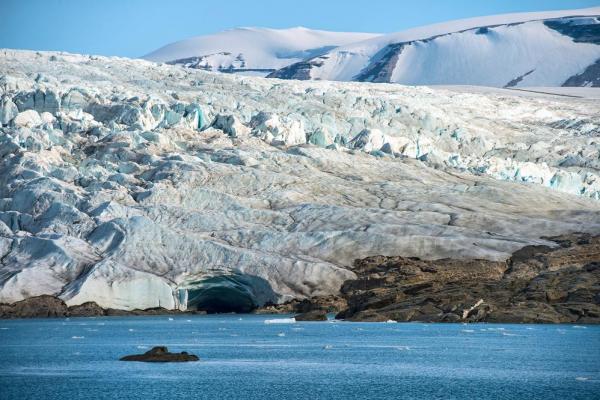
SVALBARD, Norway, Nov. 20 (UPI) ─ An ancient tropical forest found in Svalbard, a Norwegian archipelago in the Arctic Ocean, may explain one of the most dramatic climatic shifts in Earth’s history.
Some 400 million years ago, Earth’s atmosphere witnessed a 15-fold reduction in carbon dioxide. Climate scientists have long tried to account for the drop.
Some scientists believe it was the rise of forests just like the one found in Norway that precipitated the change. As the planet came to host large plants for the first time, the mighty tropical trees sucked millions of tons of CO2 from the atmosphere.
The newly unearthed forest ─ dated at 380 million years old and with its tree stumps preserved still in their upright positions ─ may mark the beginning of the transition from small plants and grasses to large tree forests.
“These fossil forests shows us what the vegetation and landscape were like on the equator 380 million years ago, as the first trees were beginning to appear on the Earth,” researcher Chris Berry, a professor of earth sciences at Cardiff University, said in a press release.
Over the course of the ancient forest’s long existence, the now-frozen trees have enjoyed a lengthy journey. During the Devonian period, 420 to 360 million years ago, the Norwegian archipelago was part of Laurasia, one of two supercontinents along with Gondwana. The ancient trees grew up near the equator, several hundred miles south of their current home.
The forest’s discovery supports the theory that the emergence of forests led to a drop in CO2 levels. In addition to sucking up more carbon dioxide, the tall trees also helped block out more of the sun’s radiation. Slowly, the planet cooled to temperatures closer to today’s.
“The evolution of tree-sized vegetation is the most likely cause of this dramatic drop in carbon dioxide because the plants were absorbing carbon dioxide through photosynthesis to build their tissues, and also through the process of forming soils,” Berry concluded.
The discovery was detailed in a new study, published this week in the journal Geology.





